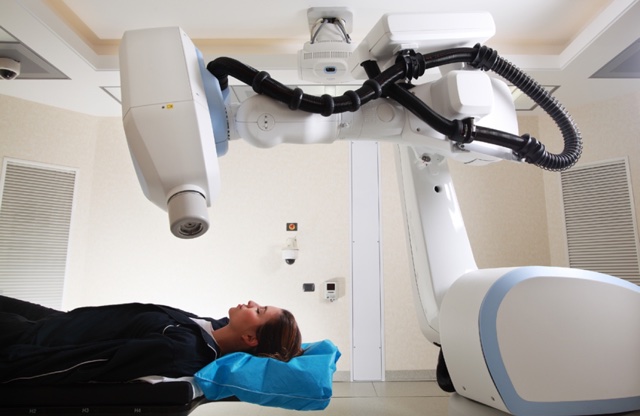CDI: THE INNOVATION IN CANCER AND NEURAL RADIOTHERAPY. THE CYBERKNIFE

Radiotherapy, along with surgery and medication, is a widely used treatment for cancer patients. Within this field, the CyberKnife or Stereotactic Radiosurgery, an advanced robotic medical device, is the most significant technological advancement in modern radiotherapy. A recent study by CDI experts found, for instance, that over 89% of patients with primary prostate cancer (PSA) who underwent Cyberknife treatment did not experience disease recurrence for up to seven years after the treatment. The CDI, Centro Diagnostico Italiano, has two Cyberknife devices, one entirely dedicated to neurological pathologies and the other for all the other districts of the body.
Radiotherapy, along with surgery and medication, is a widely used treatment for cancer patients. Within this field, the CyberKnife or Stereotactic Radiosurgery, an advanced robotic medical device, is the most significant technological advancement in modern radiotherapy.
The CyberKnife is a radiosurgery device that follows the movement of the patient and tumour throughout treatment without the need for invasive immobilisation systems that require hospitalisation, unlike other radiosurgery devices that don’t have CyberKnife technology and must use invasive immobilisation to prevent patient or tumour movement during treatment.
A recent “umbrella” review on the effectiveness and safety of the CyberKnife system confirms that the CyberKnife system had an excellent effect on treatment of cancer and some non cancer diseases, with limited toxicity.
The Cyberknife is a new way to treat cancer patients. It is a type of radiotherapy treatment that can help people with lung, liver, pancreas, and prostate cancer. It is also a good option for patients with brain and spine tumors who do not want invasive immobilization systems. The Cyberknife is a big step forward for cancer treatment.
For instance, a recent study presented by CDI experts at the 15th congress of the International Stereotactic Radiosurgery Society (ISRS) found that over 89% of patients with primary prostate cancer (PSA) who underwent Cyberknife treatment did not experience disease recurrence for up to seven years after the treatment.
“The long-term results achieved, – comments Dr Giancarlo Beltramo, Head of Cyberknife Radiosurgery at the CDI, – confirm the efficacy of extreme hypofractionated stereotactic radiosurgery (SBRT) delivered with the Cyberknife radiosurgical robot in the treatment of localized prostate cancer. A therapy that achieves disease control rates equivalent to those obtained through surgery, with comparable or even reduced toxicity levels compared to traditional radiation therapy, and with minimal to no negative impact on the patient’s quality of life”.
Another recent study shows that stereotactic radiosurgery is useful for the hamartoma, a type of hypothalamic lesion. This condition is a developmental malformation linked to epilepsy that doesn’t respond to drugs and can be mild or serious. Radiosurgery is an effective and less invasive strategy for treating trigeminal neuralgia, a painful condition. Moreover, the gathered evidence proves that SABR is a safe and effective option to tackle some primary or secondary kidney cancers.
In addition, for patients with inoperable tumors and those with recurrent tumors that have previously been treated with radiotherapy, precise and accurate radiosurgery using Cyberknife offers a new therapeutic option.
The CDI, Centro Diagnostico Italiano, has two Cyberknife devices, one entirely dedicated to neurological pathologies and the other for all the other districts of the body.





 CyberKnife is a radiosurgery system that automatically monitors and accommodates patient and tumour movements throughout the procedure. No invasive anchoring to a rigid frame is required, and therefore there is no need for the patient to be hospitalized. CyberKnife is currently based on real-time image-guidance technology.
CyberKnife is a radiosurgery system that automatically monitors and accommodates patient and tumour movements throughout the procedure. No invasive anchoring to a rigid frame is required, and therefore there is no need for the patient to be hospitalized. CyberKnife is currently based on real-time image-guidance technology.